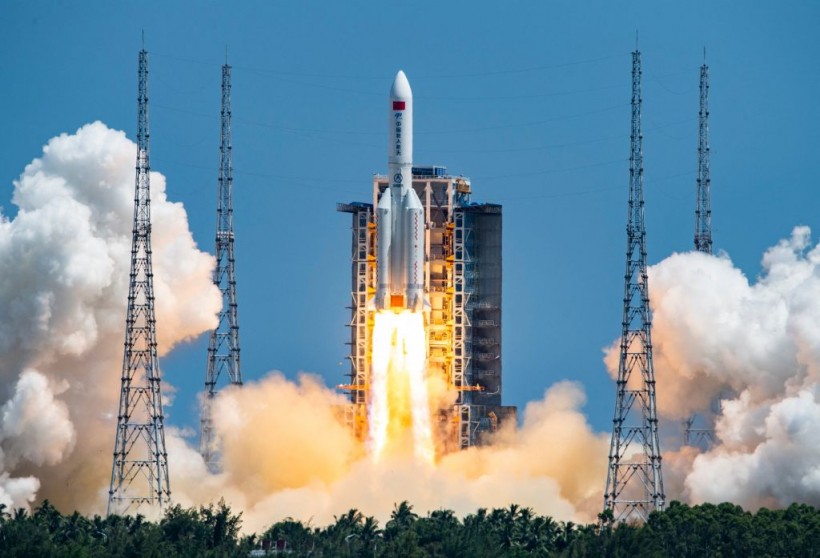China's Mengtian space station module is reportedly getting ready to launch on a Long March 5B rocket on October 31 from the Wenchang Spacecraft Launch Site on the island of Hainan, reported first by Space.com.
Mengtian, the third and final module for China's Tiangong space station, will be a significant event as it finally breathes life into the country's Tiangong space station.

The rocket carrying Chinas second module for its Tiangong space station lifts off from Wenchang spaceport in southern China on July 24, 2022.
Many people are looking forward to the historic launch, but on the other side of the coin, experts are also concerned about its aftermath.
This is because Long March 5B core stages return to Earth unguided after completing their missions, and determining where they land is like playing a guessing game.
Hence, space debris monitors will likely spend a lot of effort trying to predict where the core stage's fiery descent will take place.
Bigger than a School Bus
It is anticipated that the Long March 5B core stage weighs about 23 tons (21 metric tons). That is rough twice the mass of a typical school bus or a Boeing 737 when it is empty, according to Space.com.
Around 20% to 40% of the core stage is expected to survive reentry and reach the surface, according to experts, but it is also whether it will reach the surface of land or ocean.
A Long March 5B's debris fell in Cote d'Ivoire in 2020, causing damage to several structures. Earlier this year, some of the debris landed in Indonesia and Malaysia, according to Harry Boneham, an analyst for aircraft at the analytics firm GlobalData.
The Long March 5B's core stage is intended to reach orbit rather than re-enter the atmosphere soon after takeoff. Due to the core stage's inherent tendency to fall out of orbit a week or so after launch, prior missions of the large rocket have resulted in uncontrollable reentries, endangering the safety of people on the ground.
It is worth noting that this is China's strongest rocket and the country's only choice at the moment for heavy-lift launches. Only two additional Long March 5B launches, including the Mengtian mission, are officially scheduled.
China also intends to launch the Xuntian space telescope using the large booster in 2023.
Read also: China Shenzhou 14 Crew Shares Photos Captured Aboard Tiangong Space Station
Space Junk Problem
Earlier today, the Progress 81 engines on the International Space Station (ISS) fired for 5 minutes and 5 seconds as part of a Pre-Determined Debris Avoidance Maneuver (PDAM) to move the complex further away from the expected path of a fragment from Russian Cosmos 1408 debris.
According to NASA, Russia produced 1,500 pieces of debris when it destroyed that spacecraft as part of an anti-satellite weapon test in November 2021.
The US company SpaceX has also drawn criticism from the astronomical community, calling for more control over the private company's satellite mega-constellation launches.
NASA said there are over 500,000 bits of space debris between 1 cm and 10 cm in diameter and about 25,000 pieces larger than 10 cm in orbit. These debris fragments fly across orbit at up to 33,000 mph, traveling faster than a bullet.
Currently, 30,000 objects larger than 4 inches (10 cm) in Earth orbit are being monitored by the U.S. Global Surveillance Network. Additionally, the European Space Agency said that there are currently one million particles traveling at a speed of 0.4 inches (1 cm) around the planet.
Related Article: [UPDATE] China Completes Final Module of Tiangong Space Station Ahead of October Launch
This article is owned by Tech Times
Written by Joaquin Victor Tacla








